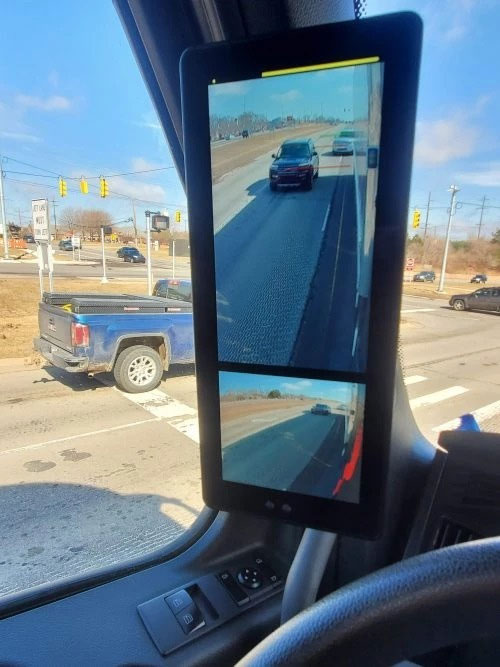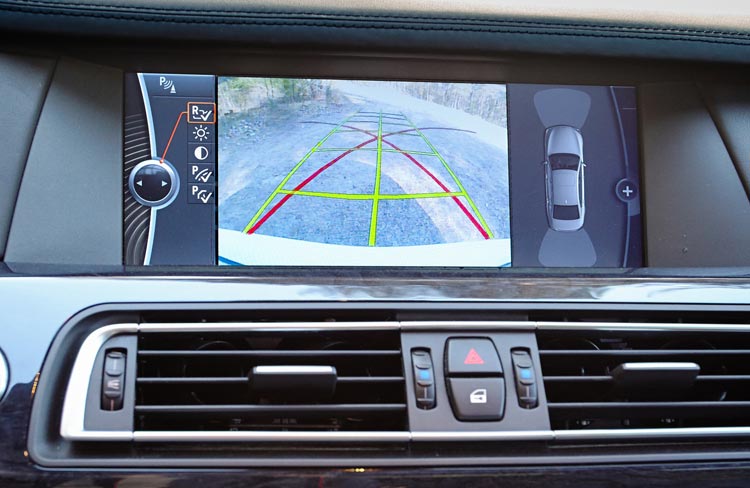Reverse Parking Assistance System
Post EnquiryReverse Parking Assist System
How to reverse park is one of the biggest challenges in city driving and with aids like reverse parking assistance, the driving experience is elevated because of the automated features that guide the driver with confidence.

Parking Aid:
With lesser area available for parking, drivers need to have an advanced guidance system for reverse parking the vehicle. A reverse park assist system helps cover that ‘blind spot’ by avoiding accidents. Smaller spaces for parking come with dangers of obstacles behind the vehicle–columns, barriers, people standing, or even bushes and hedges. This reverse parking system uses computer processors which are connected to the vehicle’s sonar warning system feature, backup camera, and two additional forward sensors on the front side fenders. The system provides a feeling of safety for both the driver and the passenger, thus avoiding accidents.
Reverse Park Assist Features:
- Gives the driver a clear view of the space behind the vehicle.
- Beeps and alerts drivers when obstacles are nearby.
- Works evenly in all weather conditions.
- It is durable and easy to install.
Reverse Park Assist is a very intelligent service and estimates cleverly for the driver on several parameters for ease of parking and removing the vehicle from the parked position.
The parking display system is connected to a sensor placed on the bonnet and bumper of the vehicle that scans the parking lot for empty parking lots estimating the space is enough. These parking assist sensors suggests the optimum space available, the needed steering movements and aided manoeuvring. The driver, with ease of instructions, can easily park the vehicle or remove it from a cramped stationary parking position.
The Reverse Park Assist helps in parking in tight spaces with the guided steering movements and power steering that is immediate to perform.
The driver just needs to be alert towards traffic and the parking aid system instructs through the entire process of parking or removing a vehicle from parked space.
The Reverse Park System ensures:
- Effective use of parking spaces utilising tighter spaces too
- Automatic parking assistance for unassisted drivers
- Parking in and out assistance
- No bumps and scratches
Parking Aid Systems are a global service and can be adapted for every vehicle as it helps in :
- Enhanced vision for better parking possibilities.
- Avoiding collisions in small and tight spaces.
- Giving entire visibility of the blind spot- the rearview that cannot be seen in traditional parking methods.
- Works fabulously in limited visibility during heavy rains, snowfall, dark streets, or foggy environments.
- Warns of possible collision or dangers with sensitive voice alerts or real-time displays.
- Reduces the possibility of accidents on crowded streets.
- Saves a lot of time in manually manoeuvring the parking vehicle in and out.
Different Reverse parking assistance system have different minimum range bandwidth specifications with the obstacles, therefore sounding alerts before a possible collision. The reverse parking system is activated automatically by pressing the reverse button.
The system also provides a sideways buffer and therefore avoids even sideways collisions.
Park Assist Sensors:
- Audio sensors
- Voice sensors
The sensors can sometimes default or malfunction in circumstances where –
- The sensors have dirt or debris on them and are not cleaned.
- Moisture frozen sensors.
Ultrasonic Sensors work based on high-frequency sound waves. The sensors produce sound pulses that are reflected off by nearby objects. These sensors are connected to alarm devices and buzz when the vehicle comes near an obstacle.
The ultrasonic sensor is not very effective with –
- Very small objects as their frequency might not be detected.
- Noisy backgrounds make the sensors catch the required frequency to function.

